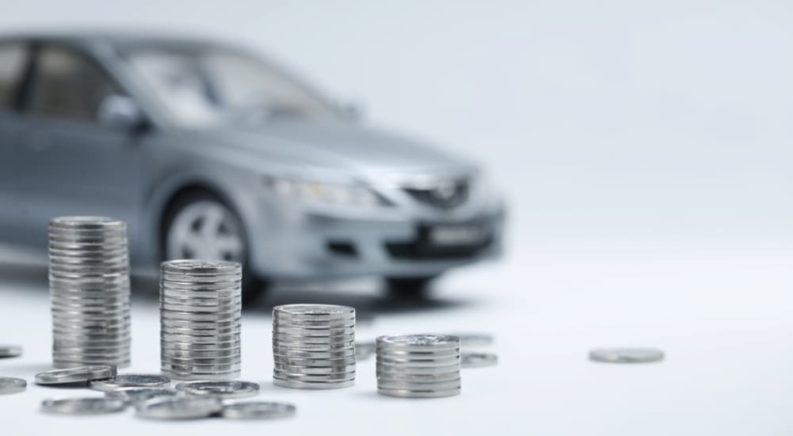Buying a cheap car that appreciates is like buying a winning lottery ticket: it almost never happens, and when you see it happen to someone else, you kick yourself for not making the same choice they did. There are several factors that play into a car’s value, some of the bigger ones being A.) How long ago production of the vehicle ceased, B.) How many copies of the vehicle were manufactured, and C.) How was the car treated by its previous owners? All of these ultimately contribute to the rarity or lack thereof of vehicles in mint condition. If you’re thinking of finding out how to “sell my car,” it may be worth holding on to it instead. It certainly worked out for anyone lucky enough to own any of the following five cars, as long as they’re unmodified, garage-stored, and in clean, running order. Given enough time, you never know what might turn into that lottery ticket you’ve been waiting for.
1. Jeep Cherokee XJ (1984 – 2001)
The Jeep Cherokee XJ debuted for the 1984 model year as the brainchild of esteemed automotive designer Dick Teague. It’s credited with changing the SUV game and bringing this category of vehicle to the mainstream (i.e. the suburbs). The Cherokee XJ’s understated good looks paired with 4WD off-roading capability made it a hit, and its popularity has yet to die down. Its age alone makes this gem a rare find, so if one goes for sale with low numbers on the odometer, it’s going to fetch a good price.
There’s nothing overtly special about the Cherokee XJ–it’s just a good car. A fact that may contribute to just how difficult it is to find one in mint condition. This wasn’t a car that you kept covered up, getting it out only to wash it by hand and show off to your neighbors. This was a vehicle for doing grocery runs in the snow or driving your kid to school when it’s hailing. These cars were well-loved and well-used, so even though Jeep made a lot of them, most of them are far past their prime.
2. Volkswagen Type 2 Microbus (1950 – 1979)
When it debuted, the Volkswagen Bus was the car you’d pile your kids into for a road trip to Florida. It really was an attainable, family car. Today, it’s anything but. This cute, colorful microbus now sells for as much as $302,000 at auction, and anyone who’s spending that kind of cash on a vehicle isn’t letting it anywhere near children or the state of Florida. That’s a high price for any car, let alone one that’s got half a century of wear and tear.
The Volkswagen Bus is special for a lot of reasons, though. For one, there’s no other vehicle like it. It’s got character to spare and is the type of car that makes you happy just looking at it. They also hold special value for basically an entire generation. Whether it’s family vacations or wandering days of youth, so many who were coming of age in the 1960s and 1970s have memories closely tied with the Volkswagen Bus. It’s said that nostalgia weakens the desire for money, so it’s only natural that people would pay top dollar for a car that would enable them to get lost in retrospection.
3. Honda Prelude Third Generation (1988 – 1991)
The Honda Prelude’s a relatively unknown vehicle due to its spotlight being stolen by competitors like the Toyota Celica. It’s a compact sports car that was first sold in 1978, and with each generation that passed, it saw improvements. It started off with a 1.7-liter inline-4 that produced just 72 hp and 94 lb-ft of torque, and ended its run in 2001 with a 2.2-liter inline-4 that was capable of cranking out 195 hp and 156 lb-ft of torque.
While the third-generation Prelude isn’t quite as powerful, at a maximum of 140 hp and 135 lb-ft of torque, it’s regarded by many as one of the best-looking Honda’s ever made. It has distinctly 1980s sleek styling and was the only generation to have pop-up headlights. It’s kind of a sweet spot for the Prelude, falling right in the middle of the timeline. It’s not underpowered, and it retains a retro aesthetic that was swapped for something more modern in the fourth generation. Adding to its high value is its scarcity; the Prelude didn’t sell in prolific numbers like the Celica.
4. Nissan 240SX S13 (1989 – 1994)
Nobody did more to enrich car culture in the 1990s than Japan. It’s the country of origin for the Nissan 240SX (known as the Silvia in Japan) and the 240SX’s favorite pastime: drifting. It didn’t take long for this match made in heaven to gain popularity in the United States. Both made their way to the west around the same time, and the combination of the 240SX’s affordability with the reckless fun that drifting delivered set young hearts fluttering. The first generation 240SX’s aptitude for drifting can be credited to its lightweight, well-balanced chassis and RWD.
However, that aptitude meant that every youngster with a 240SX and extra cash was spending it on aftermarket parts designed to maximize power. Unmodified cars tend to sell better, so if you were one of the few that didn’t immediately strap a turbo on your 240SX, your controlled (and lame) choice has surely paid off. Aside from rampant modification, the 240SX was stretched, driven, and crashed to its limit by thrill-seeking young people. It’s hard to say how many made it out of the 1990’s unmodified and un-wrecked, but those that did are certainly not as affordable as they used to be. Sorry, kids. If you want to drift, you got to pay the tax.
5. Subaru Impreza WRX Bugeye (2002 – 2003)
The Subaru Impreza made a name for itself as a World Rally champ, rocketing high-speed sleepers into the mainstream. Rally is a unique type of racing where drivers mostly operate modified versions of street-legal cars. Unlike Nascar or Formula 1, fans of the sport can actually drive and own the vehicles they love to watch. The Subaru Impreza WRX debuted in 1992, but it wasn’t available in the United States until 2002. The first cars to make it to the States were nicknamed “bugeye” due to the polarizing look of their rounded headlights, and people either hate it or love it.
Polarizing looks aside, the first-ever turbocharged Impreza in the United States packed a punch with its 2.0-liter flat-four that churned out 227 hp. The car was ordinary enough to be considered a practical commuter car but fast enough to be fun–just like the WRX today. Its affordability and power potential made it another popular choice amongst young folk, meaning unmodified, handled-with-care WRX bugeyes are a fairly hot commodity even before considering the short two-year production run.
Unexpected Investments
Forget the stock market, Bitcoin, and gold. The next big investment you make might be the economy hatchback you buy just because it has good gas mileage and advantageous financing. You never know what could happen. A movie cameo might skyrocket the car to stardom, or maybe it’ll just take a decade or two for people to realize how good the car actually is. Sure, when you’re buying economy cars, the chances of striking gold are slim, but you may want to garage park it and try to keep the mileage down, just in case.




